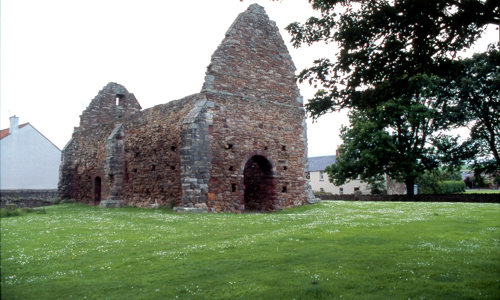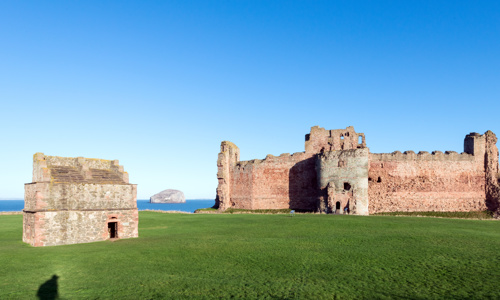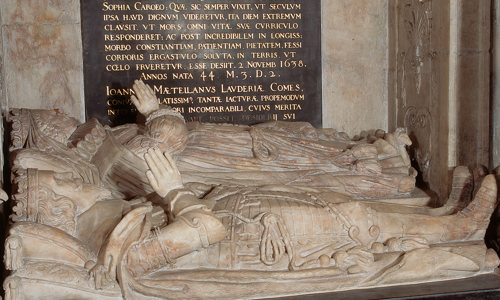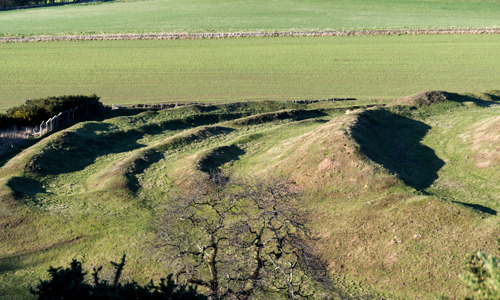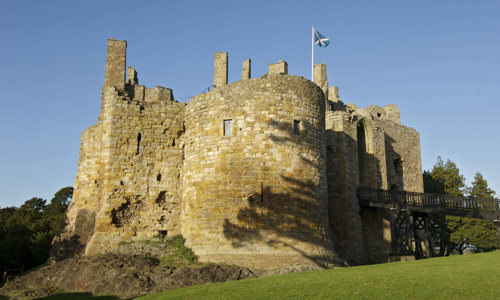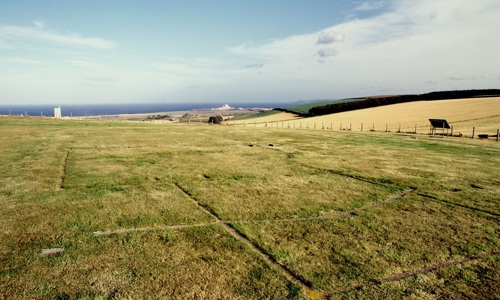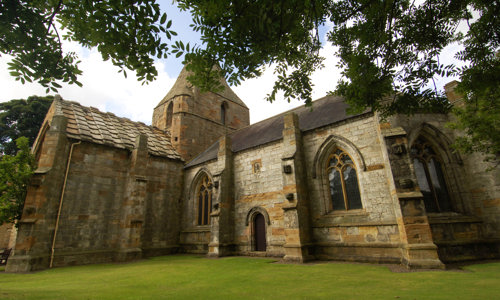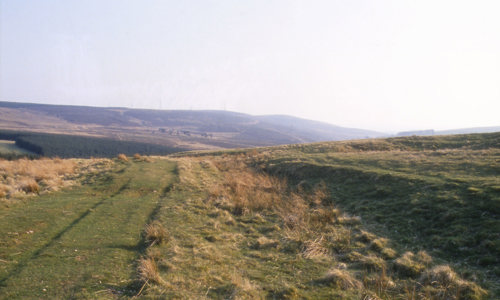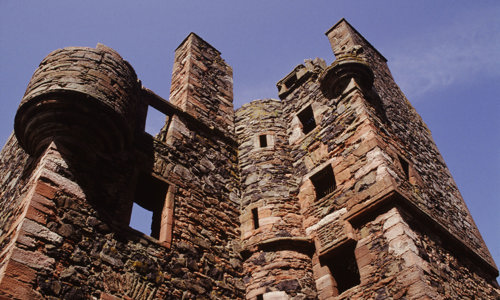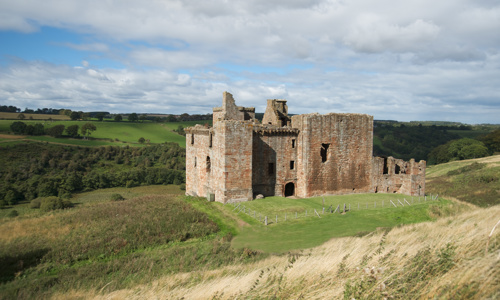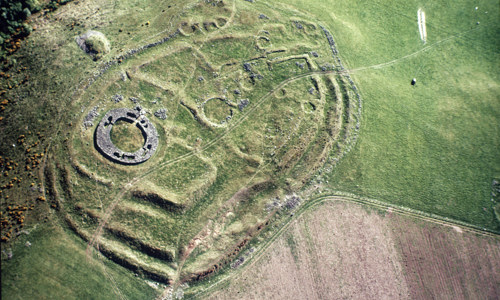History
Very few stone castles survive from the 1200s. Hailes Castle, on the bank of the River Tyne in East Lothian, is one of the best survivors.
Founding a fortification
Hailes Castle was probably first built by the de Gourlay family in the early 1200s. The de Gourlays, originally from Northumberland in England, first appeared in East Lothian during the reign of William I (the Lion) (1165 – 1214).
The first castle looks more like a fortified manor house than a fortress. Built from cubed blocks of red sandstone, the original castle featured:
- a central hall block
- a chamber tower
- a kitchen tower, featuring a fine rock-cut well
Its site is an unusual choice: it’s overlooked at close quarters by high ground, which would have made it very difficult to defend. But there is some evidence of a surrounding wall and ditch possibly dating to this period that would have offered some protection.
Masonry on the first castle is similar to the medieval chancel of the parish church at nearby East Linton. It’s likely the two buildings were made by the same stonemasons at Lord Gourlay’s request.
Extended and strengthened
The de Gourlays lost the castle in the mid 1300s, possibly due to an association with the Balliol family. The Balliols ultimately lost the battle for the crown of Scotland during the Wars of Independence.
The Hepburn family, tenants of the earls of Dunbar, became lords of Hailes. The castle may have been severely damaged during the wars, and along with Dirleton and Yester castles, it may have been one of the three East Lothian castles to have been captured by Antony Bek, bishop of Durham during Edward I’s invasion in 1298.
The Hepburns rebuilt the castle, partly to repair it, but also to upgrade the accommodation. Their extensions can be seen in:
- the stone curtain wall
- the tower house
- the hall and chapel
The Mary Queen of Scots connection
James Hepburn, 4th earl of Bothwell was probably born at Hailes Castle in 1535. He’s most famous for becoming the third husband of Mary Queen of Scots. Bothwell and Mary stayed at Hailes Castle on their way from Dunbar to their wedding at Holyroodhouse in Edinburgh on May 5, 1567.
The marriage proved deeply unpopular, and just over two months later, Mary was forced to abdicate the throne to her infant son, who became James VI. Bothwell fled to exile in Denmark, and was eventually imprisoned there. He’s said to have gone insane before his death in 1578.
Following Bothwell’s downfall, the castle passed into the hands of the Stewarts, then the Setons. An attack by Oliver Cromwell’s forces in 1650 effectively ended Hailes’ days as a noble residence.


